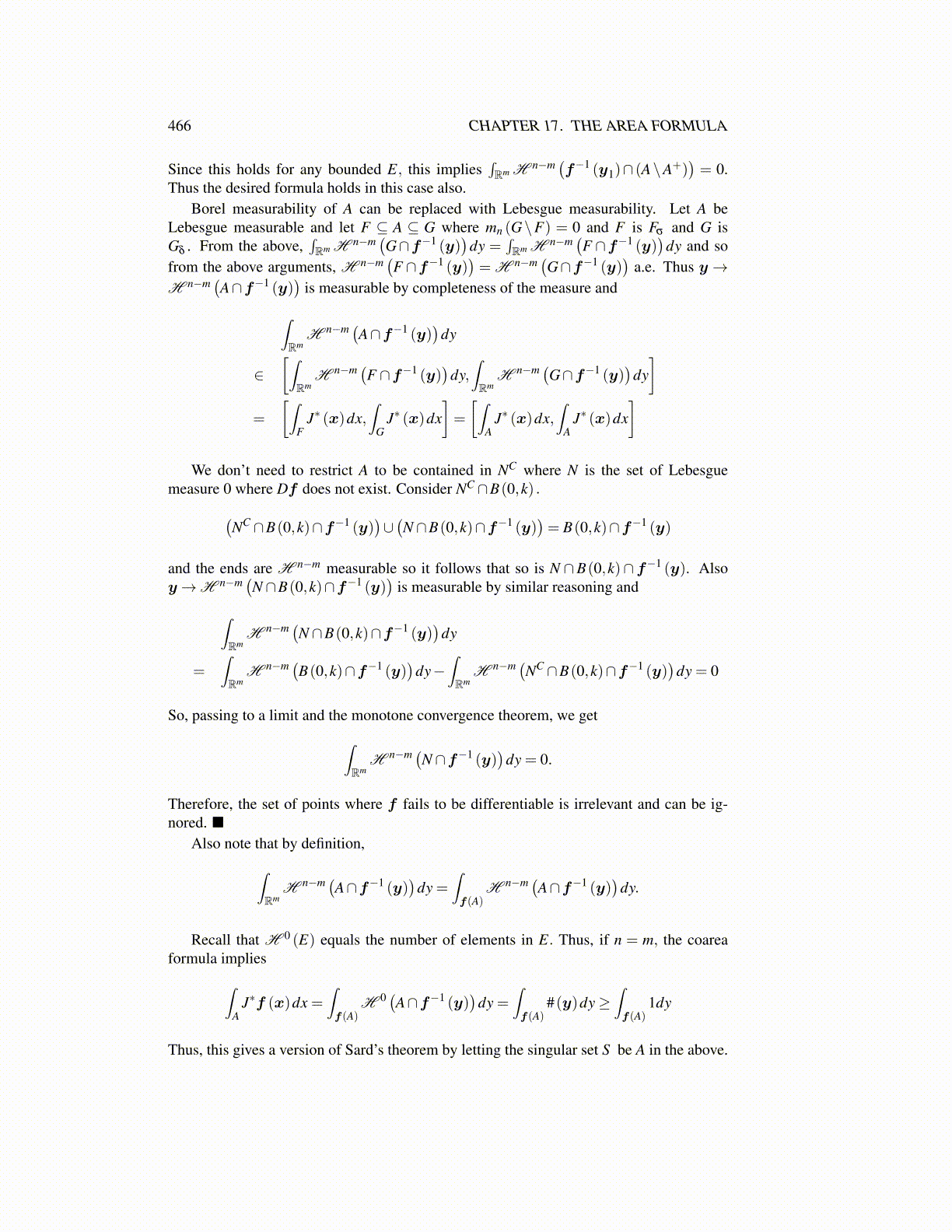
466 CHAPTER 17. THE AREA FORMULA
Since this holds for any bounded E, this implies∫Rm H n−m
(f−1 (y1)∩ (A\A+)
)= 0.
Thus the desired formula holds in this case also.Borel measurability of A can be replaced with Lebesgue measurability. Let A be
Lebesgue measurable and let F ⊆ A ⊆ G where mn (G\F) = 0 and F is Fσ and G isGδ . From the above,
∫Rm H n−m
(G∩f−1 (y)
)dy =
∫Rm H n−m
(F ∩f−1 (y)
)dy and so
from the above arguments, H n−m(F ∩f−1 (y)
)= H n−m
(G∩f−1 (y)
)a.e. Thus y→
H n−m(A∩f−1 (y)
)is measurable by completeness of the measure and
∫Rm
H n−m (A∩f−1 (y))
dy
∈[∫Rm
H n−m (F ∩f−1 (y))
dy,∫Rm
H n−m (G∩f−1 (y))
dy]
=
[∫F
J∗ (x)dx,∫
GJ∗ (x)dx
]=
[∫A
J∗ (x)dx,∫
AJ∗ (x)dx
]
We don’t need to restrict A to be contained in NC where N is the set of Lebesguemeasure 0 where Df does not exist. Consider NC ∩B(0,k) .(
NC ∩B(0,k)∩f−1 (y))∪(N∩B(0,k)∩f−1 (y)
)= B(0,k)∩f−1 (y)
and the ends are H n−m measurable so it follows that so is N ∩B(0,k)∩ f−1 (y). Alsoy→H n−m
(N∩B(0,k)∩f−1 (y)
)is measurable by similar reasoning and
∫Rm
H n−m (N∩B(0,k)∩f−1 (y))
dy
=∫Rm
H n−m (B(0,k)∩f−1 (y))
dy−∫Rm
H n−m (NC ∩B(0,k)∩f−1 (y))
dy = 0
So, passing to a limit and the monotone convergence theorem, we get∫Rm
H n−m (N∩f−1 (y))
dy = 0.
Therefore, the set of points where f fails to be differentiable is irrelevant and can be ig-nored. ■
Also note that by definition,∫Rm
H n−m (A∩f−1 (y))
dy =∫f(A)
H n−m (A∩f−1 (y))
dy.
Recall that H 0 (E) equals the number of elements in E. Thus, if n = m, the coareaformula implies∫
AJ∗f (x)dx =
∫f(A)
H 0 (A∩f−1 (y))
dy =∫f(A)
#(y)dy≥∫f(A)
1dy
Thus, this gives a version of Sard’s theorem by letting the singular set S be A in the above.